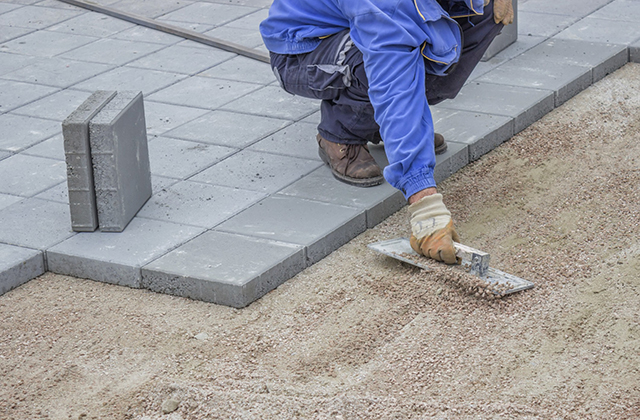Whether you’re interested in a durable concrete driveway, a decorative brick one or a utilitarian access road topped with asphalt or gravel, the materials you need represent only part of the cost of installation. Cutting and paving a driveway is a labor-intensive job that is virtually impossible without heavy machinery, and the cost of a contractor often surpasses the cost of materials. Get several labor estimates, and remember that compatibility between you and the contractor you choose trumps bargain prices. The cost of new driveway Perth depends on the space of your driveway.
Your cost estimate begins with an accurate measurement of the width and length of the proposed driveway, using a surveyor’s tape. Don’t forget to take into account the garage pad — if it’s part of the project — and any width variations. After multiplying the width and length to find the area to be covered, multiply that by the thickness of the proposed covering, in feet. This gives you the volume of the material you need, in cubic feet.

Multiply this number by .037 to convert to cubic yards, which is the unit most used by materials suppliers.
For example, a standard concrete driveway is usually 4 inches — 0.33 feet — thick. If the driveway is 100 feet long and 6 feet wide, you need 200 cubic feet of material. That’s 7.4 cubic yards.
Before laying concrete, you need to lay a 1- to 2-inch layer of drain rock, and an asphalt coating requires a 4- to 6-inch bed of compacted rock, depending on the terrain and drainage characteristics. Don’t forget to include those costs in your estimate.
Bricks and Pavers — Bricks and pavers come in predetermined thicknesses, so you don’t need to quote a volume when ordering them — just the area of your driveway. Calculate the number of bricks or pavers you need by dividing the dimensions of a single unit into the area of the driveway and adding a 5 percent overage. Driveway Edging — You may want to create a border, using bricks, pavers or rocks — this is recommended for gravel driveways because it prevents material from draining or being thrown off the roadway. Measure the length of the driveway, multiply by 2 and add a 10 percent overage to be sure you have enough edging material. Other Features — If you live in a cold climate, you may want to consider installing a heated concrete driveway.
This involves the installation of pipes under the roadway and a boiler to heat the water. You’ll also need extra materials and labor if you want to stain or stamp the concrete.
When it comes to estimating labor, there’s no single method that works for everyone. Much depends on the availability of qualified contractors with the necessary equipment in your area as well as on the topography of your property. Expect complications, such as large tree roots and the need for culverts or drainage ditches, to add to the labor costs. Get at least three estimates.
Of course, you can always go it alone by renting the excavation equipment you need, which may be the best option if you live in a sparsely populated, rural setting. Don’t forget to include the cost of delivery and pick-up of the equipment in the rental costs.
It’s possible to get a rough idea of the cost of your new driveway by consulting online sources, such as Home Advisor. The best way to use calculations performed by using information from such a site is to present it to a contractor as a benchmark. Even though there’s no such thing as a standard driveway, having a rough cost estimate in hand provides the basis for negotiation.